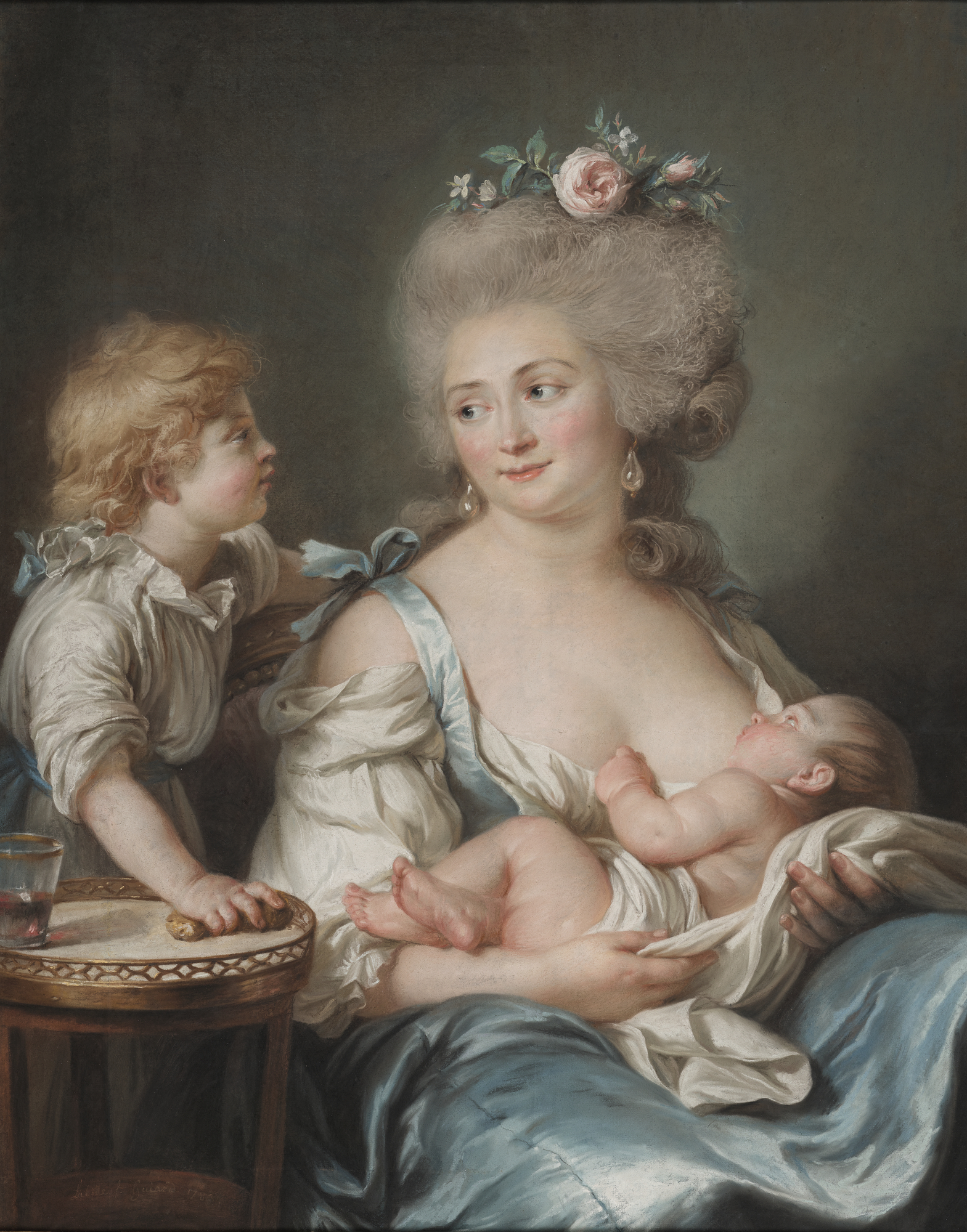Getty Buys Prize Pastel by Adélaïde Labille-Guiard
 |
| Adélaïde Labille-Guiard, Portrait of Madame Charles Mitoire With Her Children (1783). J. Paul Getty Museum |
The Getty Museum was successful bidder at yesterday's auction of Adélaïde Labille-Guiard's Portrait of Madame Charles Mitoire With Her Children (1783). Long in the Rothschild collection, and rated the artist's greatest pastel, it was known to scholars only via a 1923 black-and-white photograph. The portrait sold at Christie's Paris for 644,000 Euros, more than quadruple the high estimate.
Madame Charles Mitoire was shown at the Salon of 1783, a breakthrough year for women artists. Labille-Guiard, along with Élisabeth Vigée Le Brun and Anne Vallayer-Coster, each exhibited multiple works. Labille-Guiard's subject, a breast-feeding mother, was both topical and daring. Rousseau had promoted breast feeding as natural, but it was unusual to so portray a socially prominent sitter. Madame is wearing pearl earrings.
It's not easy to find major works by European women artists pre-1900. This March the Getty announced the acquisition of an Artemisia Gentileschi painting. Coming on the heels of that, the Labille-Guiard suggests that the institution is giving greater priority to women artists. In any case, the Labille-Guiard becomes a major addition to the Getty's small collection of pastels, as important as any in the nation. In audacity Madame Charles Mitoire rivals the monumental Portrait of Gabriel Bernard de Rieux by Maurice Quentin de La Tour (who may have instructed Labille-Guiard in the pastel medium).
The Getty has a smaller pastel by Labille-Guiard, Head of a Young Woman, and an oil portrait by her second husband, François-André Vincent. 18th-century haters snarked that Labille-Guiard's paintings had to have been retouched by her artist-husband. Now she's better known than he is.
The new pastel will go on view as soon as possible, once it arrives in Los Angeles. The upper level of the South Pavilion, which includes the pastel gallery, has recently reopened.
UPDATE: More on the Getty's Iris blog, with video by curator Emily Beeny.
Comments
Meanwhile, I wonder if anything worth a damn that pre-dates the late 19th or early 20th century and doesn't tick off the boxes in the List of Political Correctness will ever again be bought by or given to LACMA several miles away?